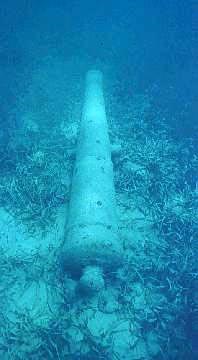Last updated: September 28, 2017
Article
San Pedro Shipwreck

The wreck of the San Pedro was rediscovered in the 1960s. The rediscovered proved profitable for those involved in modern day salvage efforts. The vessel contained thousands of silver coins and other artifacts. Bottom sediments cover the wreck, which is made up of a ballast mound 90 feet long by 30 feet wide. The wreck lies from the northwest to the southeast. The remains of the ship that were not covered by sand have been consumed by sea worms or carried away with the current. In 1977, the wreck site was surveyed by Florida's Underwater Archaeological Research Section. The FUARS recorded and mapped the ballast mount. In 1989, the wreck became the state's second Underwater Archaeological Preserve. Today, the wreck is stable and has reached a state of equilibrium with its environment. The San Pedro is among Florida's oldest artificial reefs.
The San Pedro is the subject of an online lesson plan produced by Teaching with Historic Places, a National Register program that offers classroom-ready lesson plans on properties listed in the National Register. To learn more, visit the Teaching with Historic Places home page.
The San Pedro rests in 18-20 ft. of water about 1¼ nautical miles south of Indian Key. The ship shelters a wide variety of marine organisms and lies within the Florida Keys National Marine Sanctuary. The shipwreck is part of a Florida Underwater Archaeological Preserve, and a laminated underwater guide is available from local dive shops. The preserve is open to the public year round, free of charge.
